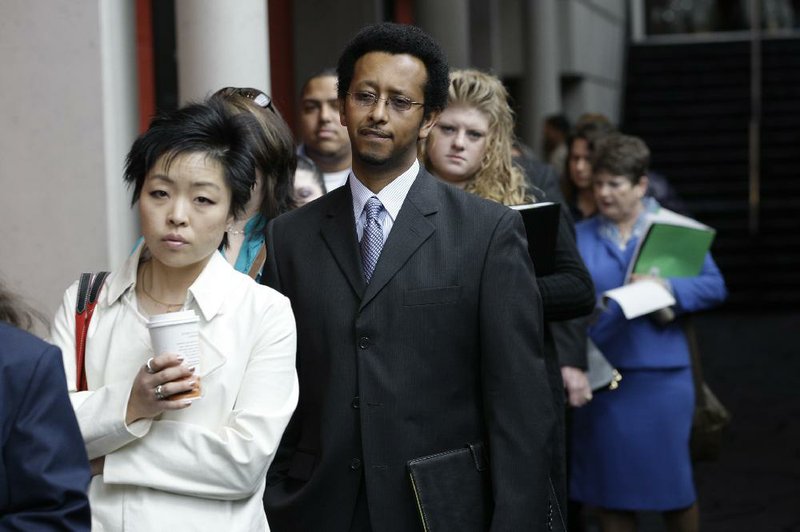WASHINGTON - The number of Americans who applied for unemployment benefits fell by 4,000 last week to a seasonally adjusted 323,000, a five-year low, as layoffs returned to pre-recession levels.
The Labor Department said Thursday that the less volatile four-week average dropped 6,250 to 336,750.That’s the fewest since November 2007, one month before the Great Recession began.
Applications are a proxy for layoffs. Weekly applications have fallen about 9 percent since November and are now at a level consistent with a healthy economy, experts say. The last time weekly applications were lower was in January 2008, when they were 321,000.
Economists were largely encouraged by the decline.
“This is a very positive trend and we should embrace it,” Jennifer Lee, an economist at BMO Capital Markets, said in a note to clients.
The job market has also improved over the past six months. Net job gains have averaged 208,000 a month from November through April. That’s up from only 138,000 a month in the previous six months.
Much of the job growth has come from fewer layoffs - not increased hiring. Layoffs fell in January to the lowest level on records dating back 12 years, though they have risen moderately since then. Overall hiring remains far below pre-recession levels and unemployment remains high at 7.5 percent.
“There is only so much companies can cut layoffs before they have to start thinking about adding to headcounts,” said Guy Berger, an economist at RBS Securities Inc. in Stamford, Conn. “The longer this continues, the more likely companies will have to add to headcounts.”
For hiring to increase enough to rapidly lower the unemployment rate, companies must gain more confidence in the economy. But some have held off adding new workers in recent months, possibly because of concerns about the effect of federal spending cuts and tax increases.
The Federal Reserve said last week that the federal government’s policy changes are “restraining economic growth.”
But Dean Maki, an economist at Barclays Capital, said that the decline in unemployment aid applications suggests companies are not too worried about the fiscal drag. He notes they are responding to the government’s actions by reducing hiring and cutting back on their employees’ hours - not laying off workers. That means they anticipate the weakness will be temporary.
Even modest job gains could provide consumers with more money. Total wages rose 3.6 percent in April compared with a year earlier the inflation rate is 1.5 percent.
The economy grew at an annual rate of 2.5 percent from January through March, a big improvement from the anemic growth of 0.4 percent in the final three months of last year. But most economists expect growth will slow in the current quarter to 2 percent or lower.
About 4.9 million people collected unemployment aid in the week that ended April 20, the latest data available. That’s about 90,000 fewer than the previous week.
A Labor Department official said Thursday that there were no unusual variables to affect the figures, such as bad weather or tardy reports from states.
Information for this article was contributed by Alex Kowalski of Bloomberg News.
Business, Pages 31 on 05/10/2013

